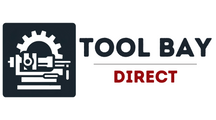
Universal vs Horizontal Milling: Key Differences
When it comes to milling machines, there are two popular options to choose from: universal milling machines and horizontal milling machines. These machines play a vital role in various industries, including manufacturing, construction, and engineering. Understanding the key differences between them is essential in making the right choice for your machining needs.
In this article, we will compare and contrast universal milling machines and horizontal milling machines, highlighting their unique features, advantages, and applications. By the end, you'll have a clear understanding of which machine is best suited for your specific projects.

Key Takeaways
- Universal milling machines and horizontal milling machines are both widely used in the machining industry.
- The main difference between the two lies in their versatility and orientation of the cutting tool.
- Universal milling machines offer greater flexibility in terms of cutting angles and tool positions.
- Horizontal milling machines are excellent for heavy-duty cutting and mass production.
- Consider factors such as desired machining capabilities, versatility, and cost when selecting the most suitable milling machine for your projects.
Universal Milling Machine versus Horizontal Milling Machine
When it comes to selecting the right milling machine for your machining requirements, understanding the features, benefits, specifications, and applications of different types is crucial. In this section, we will compare and contrast the universal milling machine and the horizontal milling machine, helping you make an informed decision.

Universal Milling Machine Benefits
- Versatility: Universal milling machines are highly versatile, allowing you to perform a wide range of milling operations with ease. Their adjustable spindle head and rotating table enable machining from different angles and positions, enhancing your flexibility in handling various workpieces.
- Advanced Features: Universal milling machines often come equipped with advanced features such as digital readouts, power feeds, and variable speed control. These features boost efficiency and precision, making complex milling tasks more manageable.
- Wide Range of Applications: Thanks to their versatility, universal milling machines find applications in industries like automotive, aerospace, and electronics, where diverse workpieces with different sizes and shapes need to be machined.
Horizontal Milling Machine Advantages
- Higher Productivity: Horizontal milling machines offer higher cutting speeds and feed rates compared to universal milling machines. This results in increased productivity, making them suitable for high-volume machining operations.
- Rigid Structure: With their sturdy construction, horizontal milling machines provide superior stability and rigidity during heavy-duty milling tasks. This ensures accuracy and precision, especially when dealing with tough materials.
- Simple Set-up: Horizontal milling machines are relatively easy to set up, as they typically have a fixed spindle and worktable. This makes them ideal for repetitive machining tasks that require quick preparation.

Specifications and Features Comparison
| Specification/Feature | Universal Milling Machine | Horizontal Milling Machine |
|---|---|---|
| Spindle Orientation | Vertical and horizontal | Horizontal |
| Worktable Configuration | Rotating | Fixed |
| Machining Capability | Multi-axis | 3-axis |
| Feed Mechanism | Manual or power | Manual or power |
Universal Milling Machine Applications
Universal milling machines find wide applications in industries such as:
- Automotive
- Aerospace
- Electronic manufacturing
- Tool and die making
Conclusion
In conclusion, understanding the difference between universal milling machines and horizontal milling machines is crucial for making an informed decision when it comes to selecting the right equipment for your machining needs. While both types of machines have their own unique advantages and applications, it is important to consider several factors before making a choice.
When choosing between a universal milling machine and a horizontal milling machine, consider the desired machining capabilities. Universal milling machines offer a wider range of operations, allowing for the production of complex shapes and contours. On the other hand, horizontal milling machines excel at heavy-duty cutting and can handle large workpieces with ease.
Another important consideration is versatility. Universal milling machines are known for their ability to perform various machining operations, such as milling, drilling, and boring. Horizontal milling machines, on the other hand, are primarily used for horizontal cutting and offer greater stability for heavy cutting tasks.
Finally, cost is a factor that cannot be ignored. Universal milling machines tend to be more expensive due to their versatility and advanced features. Horizontal milling machines, on the other hand, are often more cost-effective for specific machining requirements.
By carefully considering these factors and understanding the key differences between universal milling machines and horizontal milling machines, you can choose the most suitable machine for your projects, ensuring optimal efficiency and productivity in your machining operations.

